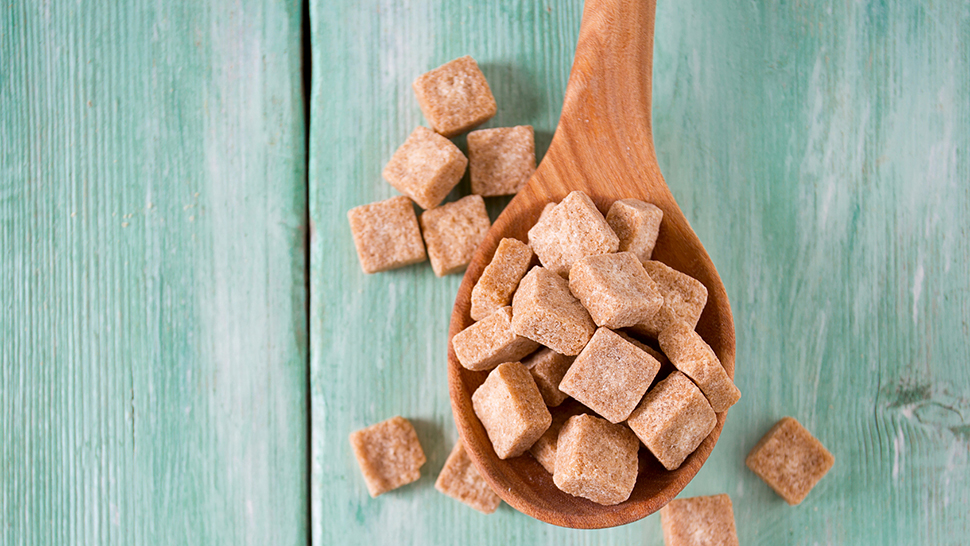
Americans are consuming nearly 150 pounds of added sugar per year — that’s approximately 42 teaspoons per day! The American Heart Association recommends limiting added sugar consumption to no more than 6 teaspoons for women and children, and 9 teaspoons for men — quite a lot less than most are consuming. While sugar-sweetened beverages and desserts contribute to about 70 percent of the added sugar in our diet, other packaged foods such as sauces, cereals, snacks, and breads contribute a significant amount as well.
While it’s not new news that Americans could curb their sugar intake, many people struggle to take this advice. In fact, research has shown that sugar may activate the pleasure center of the brain, providing a “feel good” quality simply from eating it. (But remember, that’s a fleeting feeling!) Brain scans have shown that sugar triggers the same part of the brain as cocaine. With sugar hiding in places you don’t expect, it may seem impossible to avoid. Don’t get discouraged though, your tastebuds and food preferences can adjust, and you can kick that sugar addiction with a little effort and a few simple strategies.
- Eat regular meals. When you let yourself get too hungry, your brain craves fast fuel, which comes in the form of sugar. Avoid the cookie monster by eating approximately every 3 to 4 hours.
- Fill up on foods with fiber and protein. Similar to eating regular meals, this helps keep your blood sugar stable, and you from craving sweet foods.
- Choose whole foods. Processed foods almost always contain added sugars, that hide – sometimes in surprising quantities. Even whole foods that are naturally sweet, like fruits and some vegetables, will help you curb your sugar habit. Sweeter whole foods, such as carrots or watermelon, only provide small doses of sugar compared to similar amounts of processed foods, and whole foods serve up other nutrients like fiber that keep you from reaching for the candy jar.
- When you feel a sugar craving arising, assess the situation. Are you starving? Reach for a healthful snack filled with protein and fiber. Are you just used to eating something sweet at this time of day (i.e. after a meal or for a mid afternoon pick-me-up)? Satisfy a sweet craving by sipping on a cup of unsweetened chai tea or grabbing a handful of frozen grapes (or other fruit).
- Don’t reach for the fake stuff. Alternative sweeteners like stevia or aspartame are anywhere from two to hundreds of times sweeter than sugar, making you less sensitive to a sweet taste over time. Research suggests eating alternative sweeteners can train your taste buds to want more sugar, and naturally sweet foods like fruit may no longer taste as sweet.
- Learn to read labels. When choosing packaged foods, look for ingredient lists that either don’t have added sugars or have added sugar that is low on the ingredient list (third in line or later).
- Embrace the 20 minute rule. When a craving arises, first assess the situation (see number 4). Then give yourself 20 minutes to do something else. If you still want the treat, allow yourself to have a small amount — for example a half cup of ice cream or one square of dark chocolate. Savor each bite and then move on. Too much restriction will just lead to a binge, so it’s important to enjoy the occasional treat.
Remember that you didn’t pick up your sugar habit overnight so it won’t be “cured” in just one day either. It takes time and practice to create new habits so give yourself credit for each positive decision you make and don’t beat yourself up if you had one too many treats in a day. Just make the next meal a healthy one and continue to practice balance.